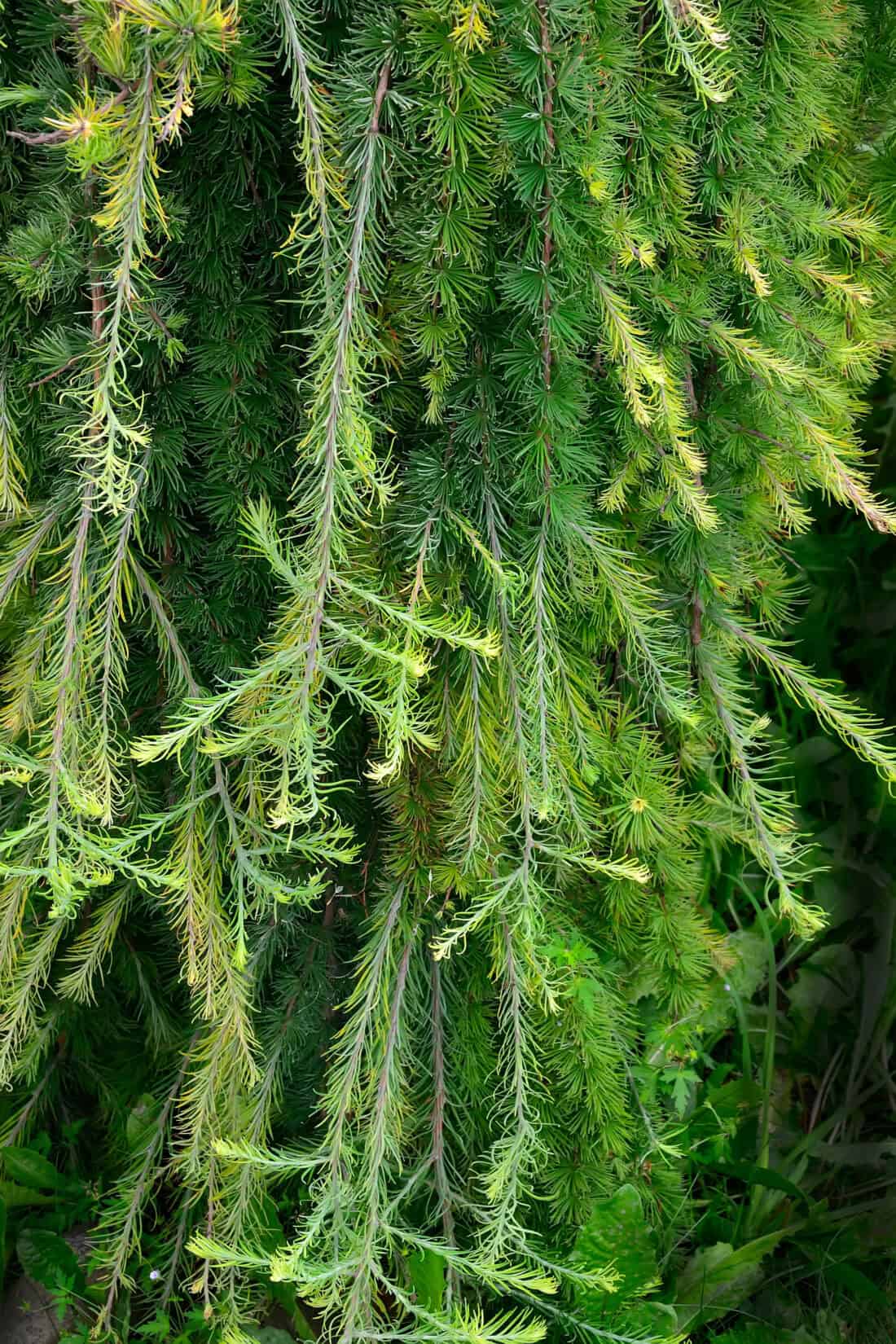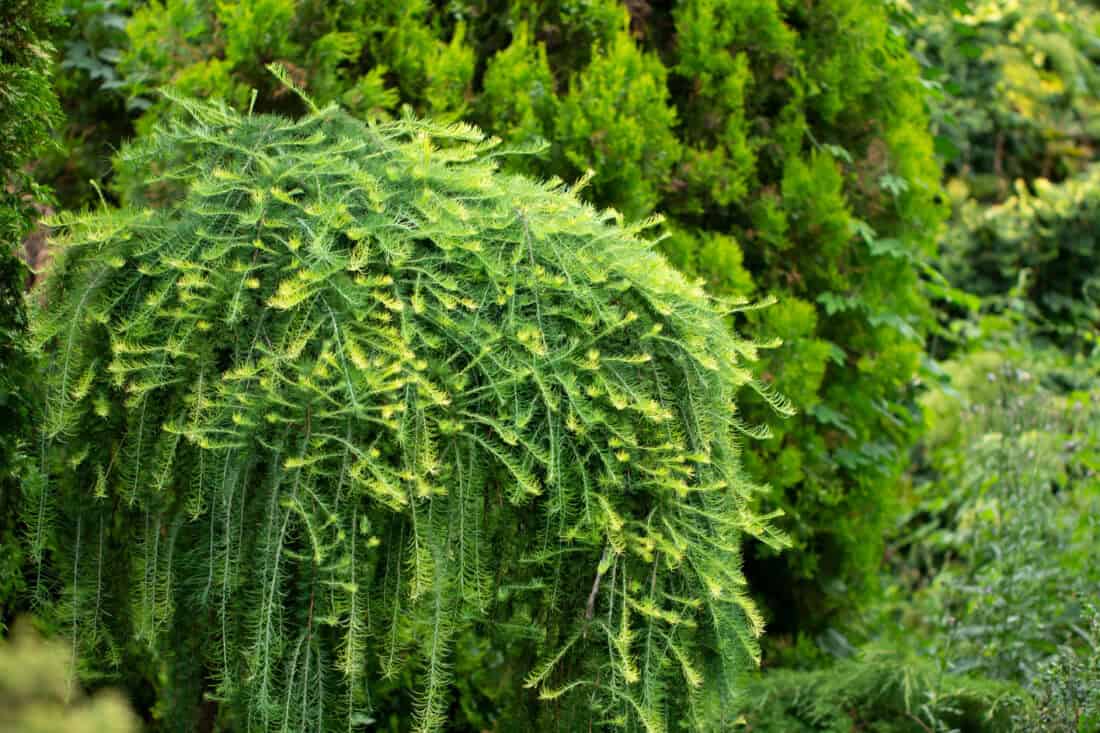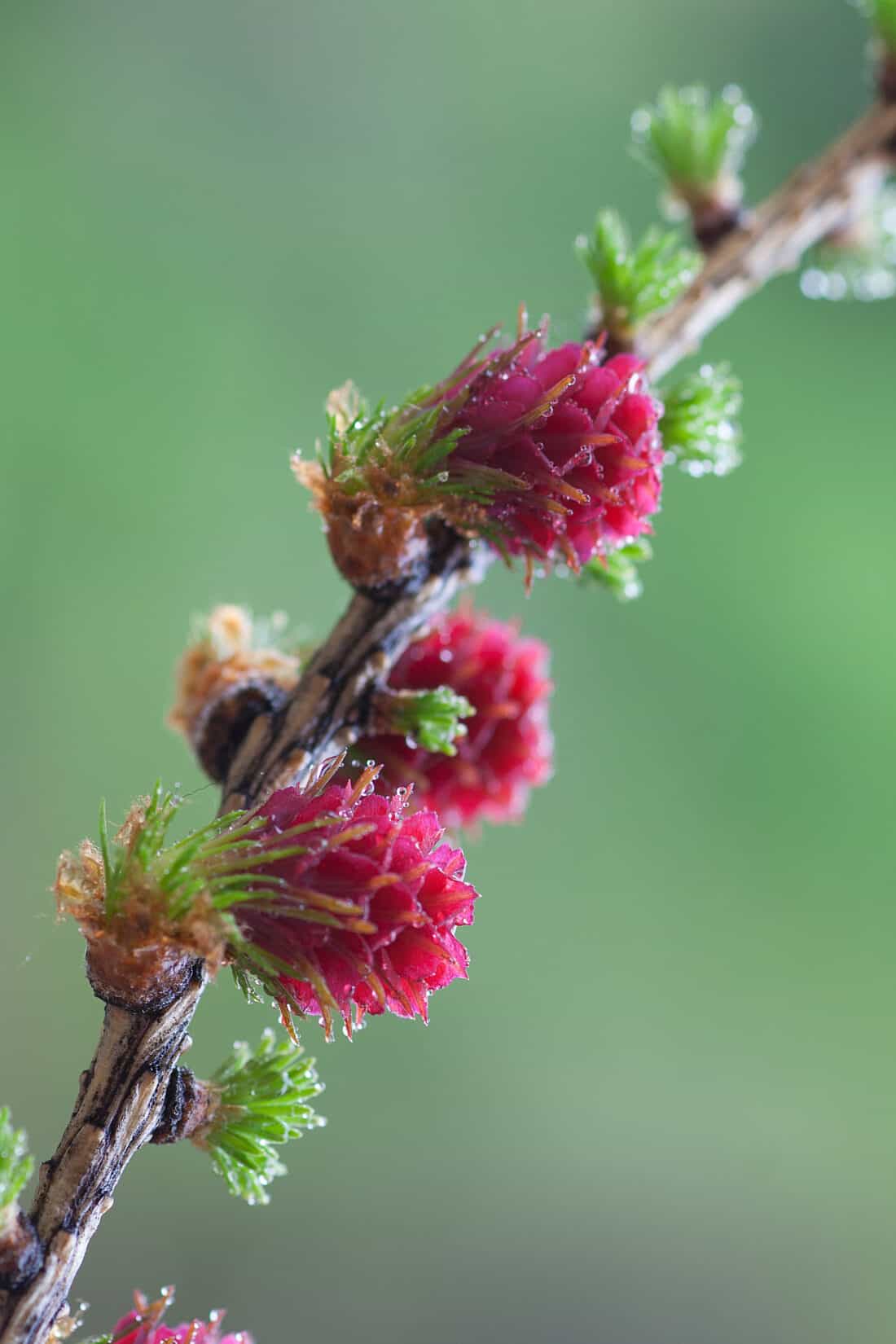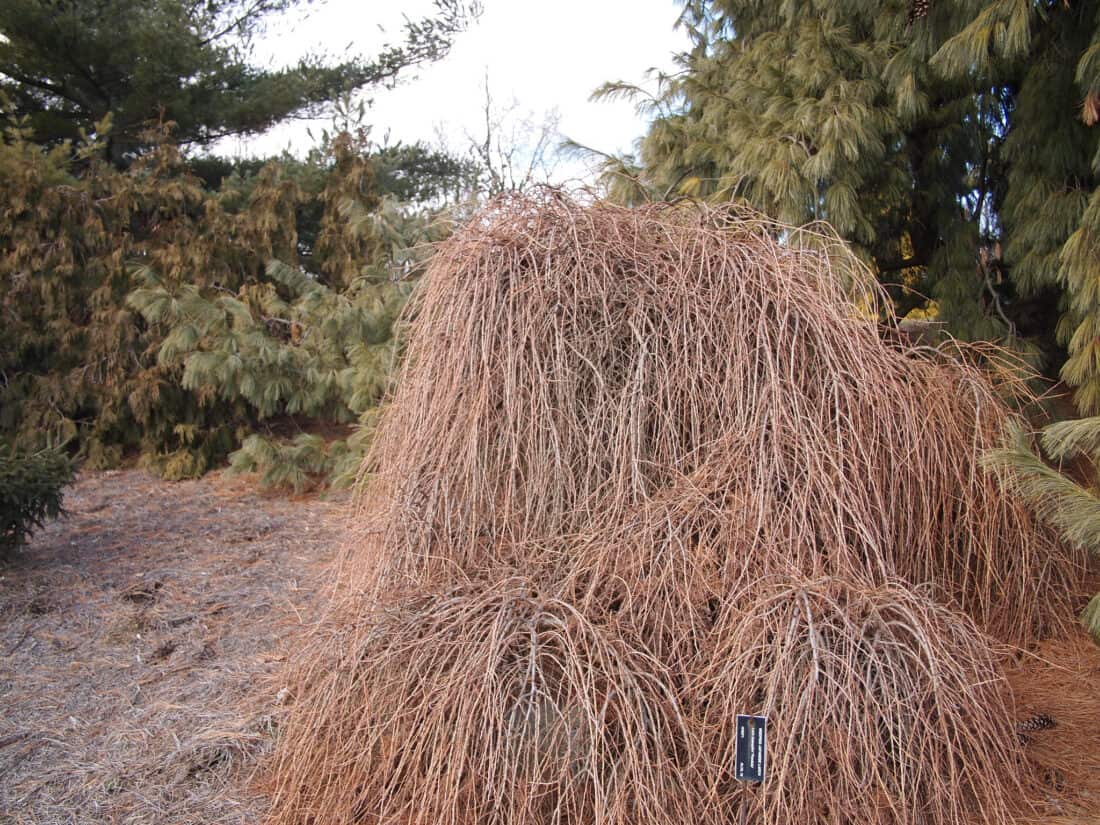I fell in love with Larix years ago when I came across a stunner of a specimen in a design client’s garden. It was huge and, understandably, just about the only thing they wanted to keep in their landscape. I was fascinated by it because, at first look, you’d think – just another pine tree – and lump it in with all the other ‘evergreen’ trees. But come fall, it will be very different – as a deciduous tree (it is not actually an evergreen!) all those needles turn a beautiful gold before falling away with all the other leaves.
I never felt particularly compelled to have a Larix of my own (probably because I have so many other pines surrounding my house) until I was stopped in my tracks by this picture of a Larix decidua ‘Pendula’:

Larix Pendula
A weeping larch tree (Larix pendula) stands against a house – looking almost like a climber and a weeper and a lush fountain of needles all at once.
Image by Jenn Pedersen
At first, I assumed that it was some sort of weeping vine (is that even a thing?), but after closer inspection, I realized it was actually a tree growing against this house—a Weeping Larch tree.
Up close, the soft, fluffy branches of the ornamental coniferous tree weeping larch (Larix decidua Pendula) are touchable, and the needled texture is unlike anything else.

Adding Larch to the Garden
Larch trees are native to many parts of the world – Europe, Japan, and North America. The American larch (common name tamarack) is a large specimen tree that grows in Canada, around the Great Lakes, and west into most New England states. (it is not, however, native to Rhode Island or Eastern MA, CT, and NH). The North American variety is Larix laricina.
The European larch is Larix decidua and the Japanese larch is Larix kaempferi. The ornamental weeping form of Larix is created by grafting, and there are weeping varieties of cultivars of the European larch (for example, Larix decidua ‘Puli’) and Japanese versions (Larix kaempferi ‘Pendula’). I don’t know of a weeping variety grafted to the North American native larch.
Larix is a curious plant – it looks like an evergreen – but it is actually a deciduous conifer. Most North American gardeners can grow this unique deciduous tree since they are all generally hardy from USDA zone 2-8.

I’m focussing on the European variety since I haven’t actually seen Larix kaempferi in any nurseries near me, but I know I can source the European weeping variety.
Larch trees are prized for their strongly weeping habit. These trees don’t make a dome of weeping branches—they are more like a giant drip. The branches tend to just hang straight down, creating an interesting dimension. Their narrowness makes them useful ornamental trees for tight spots. They can also be cultivated as an unusually small accent shrub.
Larix decidua pendula’s Growing Conditions
European larch thrives in moist soil. While it can tolerate a range of soil types, including clay and sandy soils, consistent moisture is key to its healthy growth.
It also wants a location with full sun, which will ensure vigorous growth and help maintain its lush foliage.
Larix decidua is a relatively low-maintenance tree. I’ll need to water regularly, especially during dry spells and while it is getting established. I’m currently waiting for a cooling off and will be adding this in the more ideal fall planting window. They occasionally need a little pruning to maintain shape but are largely care-free.

Weeping Larch Through the Seasons
Spring: The charming and delicate female flowers emerge as the tree awakens from its winter dormancy. The flowers are often a bright pink (which adds to the ornamental charm of this tree), and the early cones are often flush a pretty pink before they turn green and brown in the summer.


Summer: European larch is valued for its striking appearance. Its soft, needle-like foliage tends to vary greatly as new growth emerges.
Fall: The foliage (needles) turns golden yellow in the fall before shedding, providing a seasonal splash of color. I even enjoy the pool of color on the ground around the tree as it all falls away before winter.
Winter: The rough gray bark of Larix decidua contrasts beautifully with its fine foliage, adding an extra layer of visual interest throughout the year, particularly in winter, providing interest after the leaves have fallen.

Larix decidua Pendula (Weeping Larch) is my newest plant obsession. I have the perfect place for it, and just like in the picture, I plan to put it right near my house so that it can be kinda like a climber (at least in look) and kinda like a tree.
Are you crushing on anything interesting?
this collection of design are super and very nice post. new design are very good. all collections are pretty good..and all the best for your future designs..
Why not use this tree as a marker for your cat? It would be beautiful, and certainly visible if the snow gets deep.
Wavecrest Nursery in Fennville, MI grows huge specimens of this (at least they used to). I believe they have the original patent on the plant. It would definitely be cool growing up against a house–I like that idea.
If you use it extensively plan on getting calls from anxious clients thinking the plant is dead after it drops its needles. haha
I went to Lotusland in Santa Barbara this summer and they had climbing bamboo, chusquea coronalis that was tied up almost looking like weeping willows. They were gorgeous and I totally want them!
Nice! I’ve gotta have this plant in my garden!